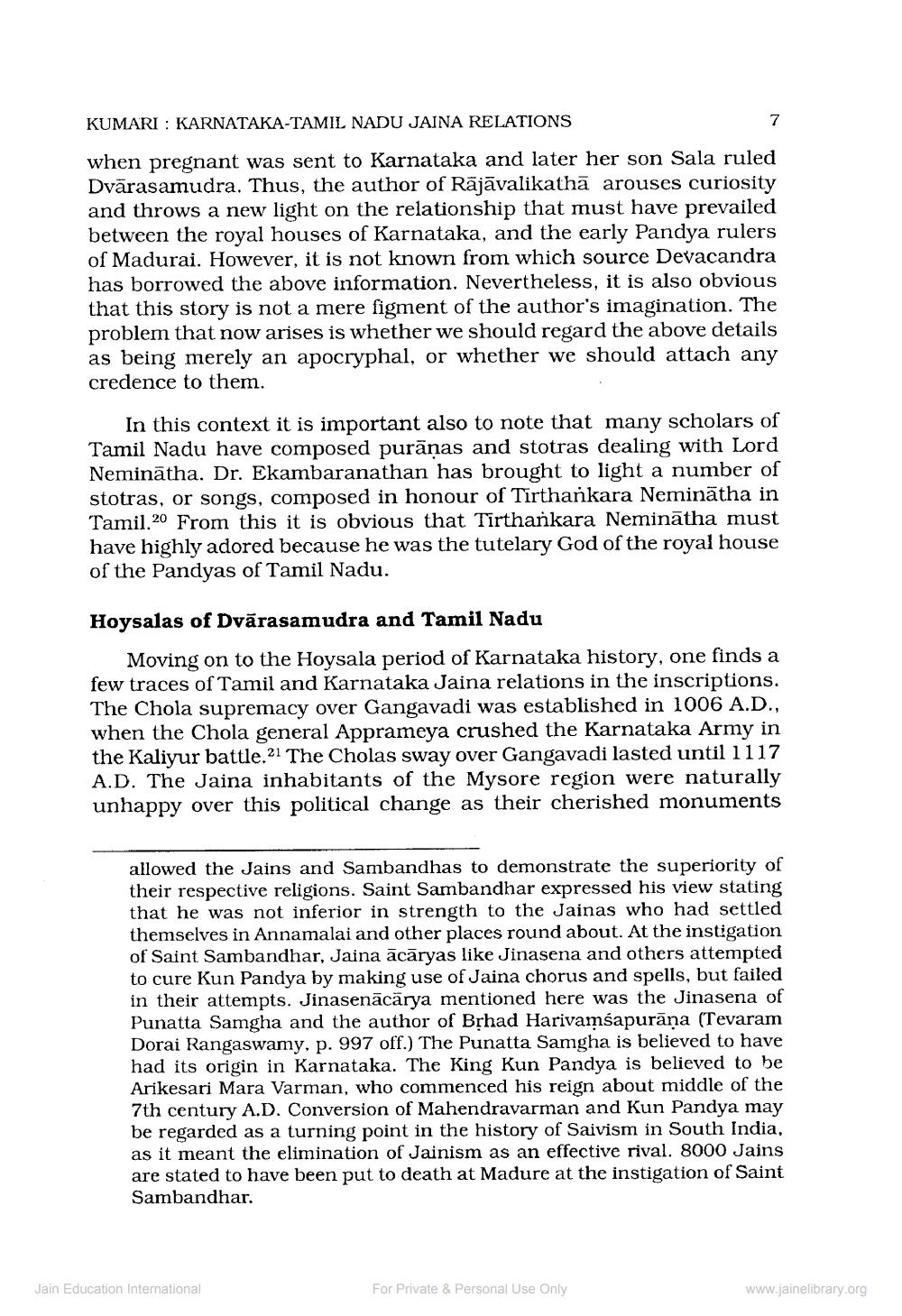________________
KUMARI KARNATAKA-TAMIL NADU JAINA RELATIONS
when pregnant was sent to Karnataka and later her son Sala ruled Dvarasamudra. Thus, the author of Rājāvalikathā arouses curiosity and throws a new light on the relationship that must have prevailed between the royal houses of Karnataka, and the early Pandya rulers of Madurai. However, it is not known from which source Devacandra has borrowed the above information. Nevertheless, it is also obvious that this story is not a mere figment of the author's imagination. The problem that now arises is whether we should regard the above details as being merely an apocryphal, or whether we should attach any credence to them.
7
In this context it is important also to note that many scholars of Tamil Nadu have composed puranas and stotras dealing with Lord Neminatha. Dr. Ekambaranathan has brought to light a number of stotras, or songs, composed in honour of Tirthankara Neminātha in Tamil.20 From this it is obvious that Tirthankara Neminatha must have highly adored because he was the tutelary God of the royal house of the Pandyas of Tamil Nadu.
Hoysalas of Dvarasamudra and Tamil Nadu
Moving on to the Hoysala period of Karnataka history, one finds a few traces of Tamil and Karnataka Jaina relations in the inscriptions. The Chola supremacy over Gangavadi was established in 1006 A.D., when the Chola general Apprameya crushed the Karnataka Army in the Kaliyur battle.21 The Cholas sway over Gangavadi lasted until 1117 A.D. The Jaina inhabitants of the Mysore region were naturally unhappy over this political change as their cherished monuments
allowed the Jains and Sambandhas to demonstrate the superiority of their respective religions. Saint Sambandhar expressed his view stating that he was not inferior in strength to the Jainas who had settled themselves in Annamalai and other places round about. At the instigation of Saint Sambandhar, Jaina ācāryas like Jinasena and others attempted to cure Kun Pandya by making use of Jaina chorus and spells, but failed in their attempts. Jinasenācārya mentioned here was the Jinasena of Punatta Samgha and the author of Bṛhad Harivamsapurana (Tevaram Dorai Rangaswamy, p. 997 off.) The Punatta Samgha is believed to have had its origin in Karnataka. The King Kun Pandya is believed to be Arikesari Mara Varman, who commenced his reign about middle of the 7th century A.D. Conversion of Mahendravarman and Kun Pandya may be regarded as a turning point in the history of Saivism in South India, as it meant the elimination of Jainism as an effective rival. 8000 Jains are stated to have been put to death at Madure at the instigation of Saint Sambandhar.
Jain Education International
For Private & Personal Use Only
www.jainelibrary.org




